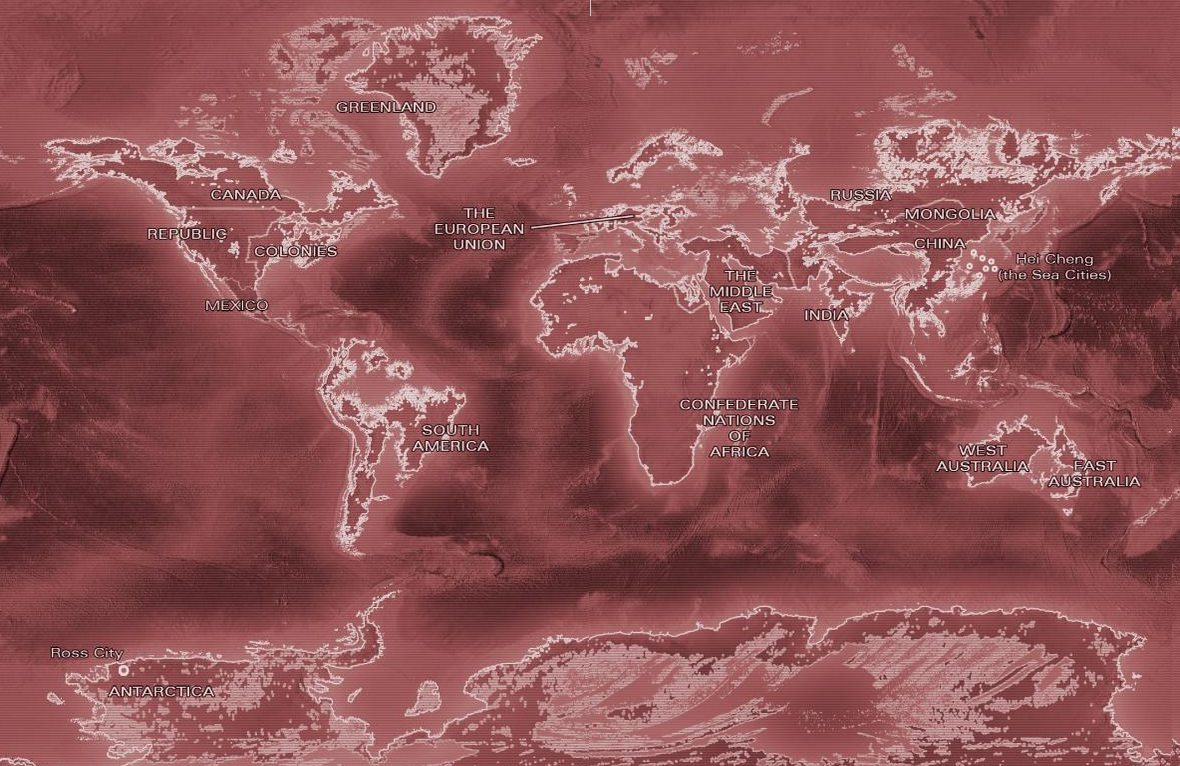As the ever-charming and eloquent Gaston from the Disney classic Beauty and the Beast stated in his highly insightful quote that inspired my title, people really tend to be drawn to books that are illustrated. Not necessarily filled with more drawings than words, like children's books, but those with at least the occasional illustration to augment the content of the novels. While Champion does not have images interspersed throughout its text, it does have a lovely illustration at the very beginning before the story itself starts.
Bear in mind that Champion is a dystopian society novel, so, as most of those are, it is set in the future. Due to this passage of time, the earth has drastically changed, and so have the countries it houses. The illustration at the beginning of the book depicts a detailed map of the earth in its current state of affairs at the time of the storyline.
One of the first things that stands out in this image is the fact that much of the land in the world has been flooded, leaving less area on each of the contents. Aside from this, the only alteration made in comparison to the modern map is the labeling on the countries, which very obviously differ from the world as we know it.
In the book itself, the only information given about this piece of art is that the "Map Illustration" was done "by Peter Bollinger". That's it, no further elaboration given upon who he is or the technique he used. However, upon quickly typing his name into Google, I found that he is an award-winning digital artist who excels both in 2D and 3D works. So, as I would already have inferred just by looking at the style of the artwork, the map was rendered on the computer, probably in Adobe Illustrator or Photoshop. I was oddly unable to find any specific information that was directly related to his work on this project, though. All searches simple reaffirmed the fact that he did create this illustration, but that's apparently all that was deemed to be relevant.
Upon further thinking, though, I became curious as to why exactly it is that we as humans are so drawn to images in our literature. Then I thought back to middle school when we were given tests on how we learned best. I recalled how nearly everyone I knew was primarily, or at least partially a visual learning. I then went to Google to inquire into the exact percentage of the population consists of visual learners, and an entry from the Pearson Prentice Hall popped up, informing me that it's over 65 percent. This would easily explain why people enjoy illustrations to fill the pages of their reading material.
However, while this book does not contain a plethora of notable imagery, such as the many well-known pieces of woodcut art in Alice in Wonderland, the art still serves a purpose that is just as relevant, as this map adds greatly to the realism of the work and the extent to which the reader can feel immersed. It is extremely convenient to flip back to the beginning to view this map, or, even if it is only glanced over once, it still offers a visual reference for what the world Lu has created is like. Plus, regardless of the content, it's simply well-designed and assimilates well with the typography and color of the rest of the book, further adding to this specific novel's beauty.

No comments:
Post a Comment